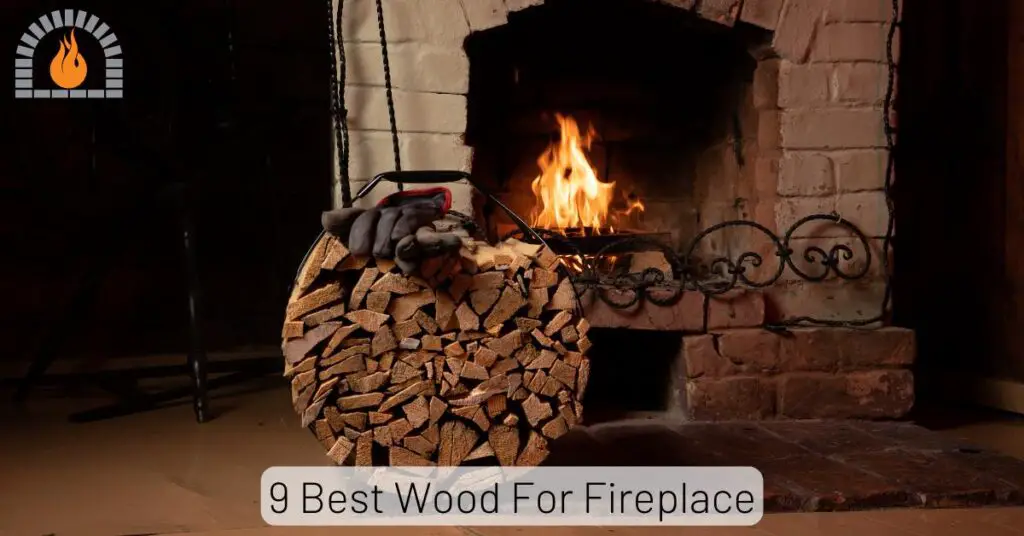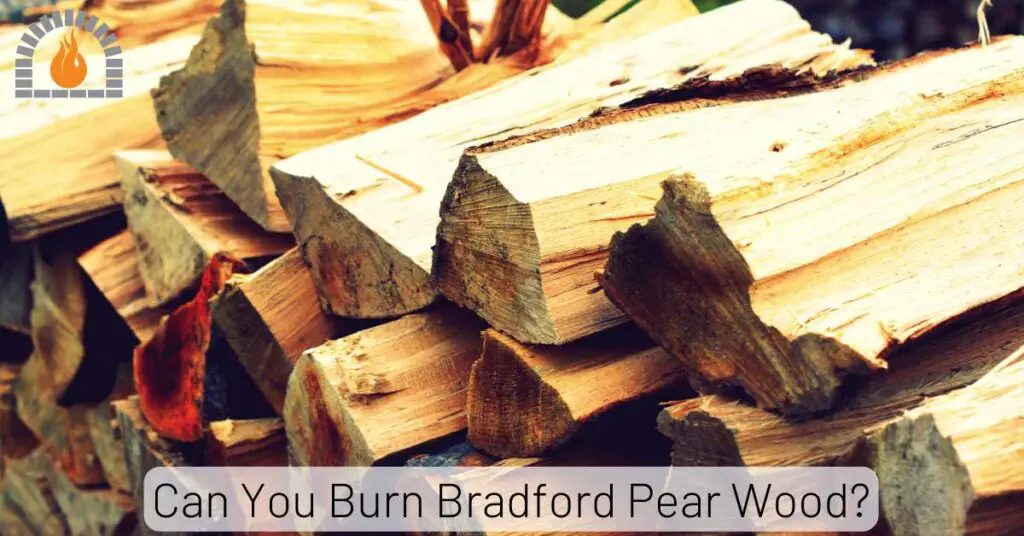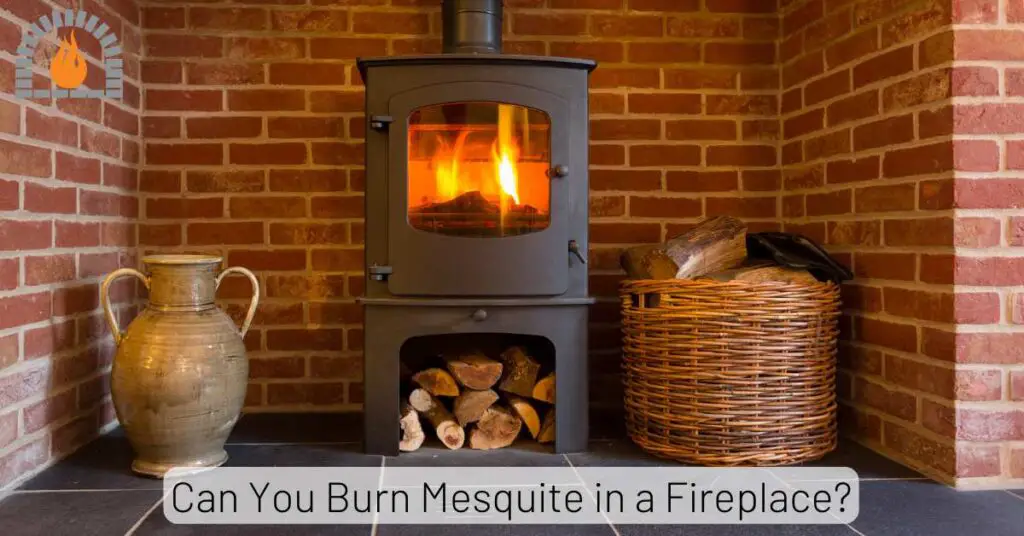Larch firewood is a softwood that offers moderate heating value and is known for its pleasant aroma when burned. While not as dense as hardwoods like oak or maple, properly seasoned larch can produce good heat with a beautiful flame display. It’s relatively easy to split but tends to spark more than hardwoods, making it best suited for indoor wood stoves with glass doors or outdoor fireplaces where sparks aren’t a concern.
With a BTU rating of approximately 20-21 million BTUs per cord, larch sits in the middle range of firewood options, providing a cost-effective heating solution in regions where it’s readily available.
Key Takeaways
- Larch firewood offers moderate heat output, around 20-21 million BTUs per cord
- It’s a softwood that burns quickly with an attractive flame display
- Proper seasoning is crucial (6-12 months) for optimal burning performance
- Larch tends to spark more than hardwoods, requiring appropriate safety precautions
- It’s widely available in certain regions, making it a cost-effective option
- Best used for kindling, mixed with hardwoods, or for short, hot fires
What Is Larch Wood?
Larch wood comes from larch trees, which belong to the genus Larix and are unique among conifers as they are deciduous, dropping their needles in autumn. There are about 10-14 species of larch found in the cooler, northern temperate zones of the world. The most common species used for firewood include the European Larch (Larix decidua), Japanese Larch (Larix kaempferi), and North American species like the Western Larch (Larix occidentalis) and Tamarack (Larix laricina).
Larch trees are valued for their tough, durable, and waterproof timber, which has historically been used in construction, boat building, and fencing. As firewood, larch offers certain characteristics that make it both useful and challenging for home heating.
Is Larch Good Firewood?
The question of whether larch makes good firewood depends on your specific needs and circumstances. Larch falls into the category of softwoods, but it’s denser and harder than many other conifers, which gives it some advantages over typical softwoods like pine or spruce.
When evaluating firewood quality, several factors come into play:
- Heat output (measured in BTUs)
- Burning characteristics (how long it burns, flame display, etc.)
- Ease of splitting and processing
- Sparking and popping tendency
- Availability and cost in your region
- Seasoning time required
Common Larch Species
| Species | Native Region | Average Height | Wood Density | Notes |
|---|---|---|---|---|
| European Larch | Central Europe | 100-150 ft | Medium | Popular in forestry plantations |
| Japanese Larch | Japan | 80-100 ft | Medium | Fast-growing, often planted for timber |
| Western Larch | NW North America | 150-180 ft | Medium-High | One of the largest larch species |
| Tamarack/Eastern Larch | Canada, NE US | 40-80 ft | Medium | Cold-hardy, found in boggy areas |
| Siberian Larch | Russia, Siberia | 80-130 ft | High | Extremely cold-tolerant |
Larch Burning Wood Heat Output
Larch firewood has a heat output of approximately 20-21 million BTUs per cord, which places it in the middle range of firewood options. For comparison:
- Oak (hardwood): 24-28 million BTUs per cord
- Maple (hardwood): 22-25 million BTUs per cord
- Pine (softwood): 15-17 million BTUs per cord
- Spruce (softwood): 14-16 million BTUs per cord
This means larch outperforms many softwoods in terms of heat production but doesn’t reach the levels of dense hardwoods like oak or hickory.
Pros of Burning Larch Firewood
1) Good Heat Output for a Softwood
Despite being classified as a softwood, larch produces a respectable amount of heat. With approximately 20-21 million BTUs per cord, it provides more warmth than many other conifers and some lighter hardwoods.
2) Attractive Flame Display
One of the standout features of larch firewood is its beautiful flame display. When burned, it produces bright, lively flames that can create an appealing ambiance in your living space. This makes it particularly popular for open fireplaces and wood stoves with glass doors where the fire can be enjoyed visually.
3) Relatively Easy to Split
Larch wood has a straight grain with few knots, making it relatively easy to split compared to many hardwoods. This can save time and effort when processing your firewood.
4) Good for Kindling
The resinous nature of larch makes it excellent for kindling. It catches fire easily and burns hot, helping to ignite larger pieces of wood and establish your fire quickly.
5) Widely Available in Certain Regions
In areas where larch trees grow abundantly, such as parts of North America, Europe, and Asia, this firewood can be a cost-effective and sustainable option.
Local availability often means lower costs and reduced environmental impact from transportation.
6) Minimal Smoke When Properly Seasoned
When larch is adequately seasoned (dried), it produces relatively little smoke compared to other softwoods. This makes it more pleasant to burn indoors and reduces creosote buildup in your chimney.
Cons of Burning Larch Firewood
1) Sparks and Popping
Like many softwoods, larch tends to spark and pop more than hardwoods when burned. This can be a safety concern, especially in open fireplaces without proper screens. It’s generally recommended to use larch in enclosed wood stoves or always use a fireplace screen.
2) horter Burn Time
Larch burns faster than most hardwoods, meaning you’ll need to add wood to your fire more frequently to maintain heat. This makes it less suitable for overnight burns or for maintaining a steady heat output over extended periods without attention.
3) Requires Proper Seasoning
While all firewood needs to be seasoned, larch particularly benefits from thorough drying. Fresh or “green” larch contains a lot of moisture and resin, which will result in excessive smoke, poor heat output, and increased creosote production. Larch typically requires 6-12 months of proper seasoning firewood to reach optimal burning condition.
4) Moderate Creosote Production
Although better than many softwoods, larch still produces more creosote than hardwoods. Creosote is a tar-like substance that can build up in your chimney, increasing the risk of chimney fires. Regular chimney cleaning is essential when burning larch or any softwood.
5) Not Ideal for Cooking
The strong, resinous aroma of larch can impart an unpleasant flavor to food cooked over it. For outdoor cooking or wood-fired ovens, hardwoods like oak, fruitwoods, or hickory are generally preferred.
Heating Value of Larch Firewood
The heating value of firewood is typically measured in British Thermal Units (BTUs), which indicate how much heat is released when the wood is burned. For larch firewood, the heating value is approximately 20-21 million BTUs per cord, making it a mid-range option in terms of heat output.
| Wood Type | BTUs per Cord (Millions) | Density (lbs/ft³) | Heat per Pound |
|---|---|---|---|
| Larch | 20-21 | 35-40 | High |
| Oak | 24-28 | 45-50 | High |
| Maple | 22-25 | 40-45 | High |
| Pine | 15-17 | 25-35 | Medium |
| Spruce | 14-16 | 25-30 | Medium |
| Hickory | 25-28 | 50-55 | Very High |
| Apple | 25-27 | 45-50 | Very High |
Several factors affect the heating value of larch firewood:
- Moisture Content: The drier the wood, the more efficiently it burns and the higher its effective heat output. Properly seasoned larch with a moisture content below 20% will produce significantly more usable heat than unseasoned wood.
- Density: Larch is denser than many softwoods, which contributes to its higher heat output compared to species like pine or spruce.
- Resin Content: The resin in larch contributes to its heat output but also affects how quickly it burns and its tendency to spark.
- Species Variation: Different species of larch have slightly different densities and resin contents, which can affect their heating values. Western Larch, for example, tends to be denser and produce slightly more heat than European Larch.
When compared to other common firewoods, larch sits in an interesting middle ground. It doesn’t provide the long-lasting, steady heat of dense hardwoods like oak or hickory, but it outperforms most other softwoods in terms of heat output and burn time.
How to Season Larch Wood Properly
Proper seasoning is crucial for getting the best performance from larch firewood. Seasoning refers to the process of drying wood to reduce its moisture content, ideally to below 20%. Here’s how to properly season larch firewood:
Timing
Larch typically requires 6-12 months of seasoning time, depending on your climate and how the wood is stored. In drier climates with good airflow, you might achieve optimal moisture content in 6 months, while in more humid conditions, a full year may be necessary.
Cutting and Splitting
- Cut larch to your desired length as soon as possible after felling
- Split the wood to increase surface area and speed up drying
- Smaller pieces dry faster than larger ones, so consider splitting some kindling-sized pieces
Stacking for Airflow
- Stack the wood in a single row, not in a pile
- Place the stack in a sunny, breezy location if possible
- Leave space between rows for air circulation
- Stack the wood off the ground using pallets or rails
- Avoid covering the stack completely with tarps, as this traps moisture
Protecting from Rain
While the wood needs airflow, it should be protected from direct rain:
- Cover only the top of the stack with a tarp or roof
- Leave the sides exposed for air circulation
- Ensure the cover slopes downward to direct water away from the wood pile
Checking Moisture Content
The most reliable way to determine if your larch is properly seasoned is to use a moisture meter:
- Insert the meter’s probes into the center of a split piece
- A reading below 20% indicates well-seasoned wood
- For optimal burning, aim for 15-20% moisture content
Without a moisture meter, you can look for these signs:
- The wood is lighter in weight than when freshly cut
- The bark begins to loosen and can be easily removed
- Cracks appear on the ends of the logs
- The wood makes a sharp, cracking sound when two pieces are banged together
Best Uses for Larch Wood as Firewood
Understanding the strengths and limitations of larch firewood can help you make the most of it in your home heating setup:
Indoor Wood Stoves
Larch works well in modern, efficient wood stoves, especially those with glass doors that allow you to enjoy the attractive flame display. The stove’s enclosed design contains sparks, making larch safer to burn than in an open fireplace.
Spring and Fall Heating
During milder weather when you don’t need intense, long-lasting heat, larch can be an excellent choice. It provides enough warmth to take the chill off without overheating your space.
Kindling and Fire Starting
Due to its resinous nature, larch catches fire easily and burns hot, making it excellent for kindling. Keep some smaller, well-seasoned larch pieces specifically for starting your fires.
Mixed with Hardwoods
For longer, more sustained heat, consider mixing larch with denser hardwoods. Use larch to get the fire started quickly and produce an attractive flame, then add hardwoods for longer burn times and consistent heat output.
Outdoor Fire Pits and Fireplaces
The sparking tendency of larch is less of a concern in outdoor settings. Its beautiful flame display makes it particularly enjoyable for outdoor gatherings and ambiance.
Emergency Heating
In regions where larch is readily available and inexpensive, it can be an excellent option for emergency heating supplies. Its easy ignition and good heat output make it practical for situations where reliable heating is essential.
Safety Considerations
As with any firewood, firewood safety should be a top priority when burning larch. Here are some key considerations:
Spark Control
- Always use a fireplace screen when burning larch in an open fireplace
- Ensure your wood stove door is closed when the fire is unattended
- Keep flammable objects at a safe distance from the fireplace or stove
- Consider removing nearby rugs or other easily ignitable items when burning larch
Chimney Maintenance
- Have your chimney inspected and cleaned annually when burning larch or any softwood
- Install a chimney cap to prevent sparks from escaping and potentially causing roof fires
- Consider using a creosote-reducing product if you burn larch regularly
Proper Storage
- Store firewood away from your home to reduce pest and fire risks
- Keep only a small amount of wood indoors for immediate use
- Ensure your indoor wood storage is away from heat sources
Fire Management
- Never leave a larch fire unattended, especially in an open fireplace
- Build smaller fires rather than large, roaring ones to reduce sparking
- Keep a fire extinguisher nearby when using your fireplace or wood stove
Environmental Impact
When considering any firewood, it’s important to think about its environmental impact:
Sustainability
Larch trees are relatively fast-growing compared to many hardwoods, making them a more sustainable option in regions where they are native. When harvested responsibly, larch can be a renewable resource for firewood.
Carbon Neutrality
Like all wood, properly sourced larch firewood is considered carbon-neutral. The carbon dioxide released during burning is roughly equal to what the tree absorbed during its growth, making it a more climate-friendly option than fossil fuels.
Transportation Impact
The environmental impact of larch firewood is lowest when sourced locally. Transporting firewood over long distances increases its carbon footprint and can introduce invasive species to new areas.
Air Quality
While seasoned larch burns relatively cleanly for a softwood, it still produces more particulate matter than most hardwoods. In areas with air quality restrictions, check local regulations before burning larch or any softwood.
Comparing Larch to Other Firewoods
To better understand where larch fits in the firewood landscape, let’s compare it to other common options:
Larch vs. Pine
Both are softwoods, but larch outperforms pine in heat output and burn time. Larch is denser than pine, resulting in longer-lasting fires and more heat per cord. However, pine is often easier to find and may be less expensive in some regions.
Larch vs. Oak
Oak is a dense hardwood that provides significantly more heat and longer burn times than larch. However, oak requires much longer seasoning time (1-2 years) and can be more difficult to split. Larch ignites more easily and provides a more visually appealing flame display.
Larch vs. Maple
Maple, another hardwood, offers more heat and longer burn times than larch but shares the advantage of being relatively easy to split. Maple is often considered an all-around excellent firewood, while larch is more situational.
Larch vs. Birch
Birch is a hardwood that burns quickly with a beautiful flame, similar to larch but with less sparking. Birch often has appealing bark that makes it visually attractive, while larch provides more heat per cord.
Larch vs. Fir
Fir is a softwood similar to pine but with slightly better heating properties. Larch outperforms fir in both heat output and burn time, making it the better choice if both are available.
Cost and Availability of Larch Firewood
The cost and availability of larch firewood vary significantly by region:
Regional Availability
- North America: Western Larch and Tamarack are common in the Pacific Northwest, Canada, and the northeastern United States
- Europe: European Larch is widely available, especially in mountainous regions
- Asia: Japanese and Siberian Larch are common in their native regions
Cost Factors
- Local Abundance: In regions where larch grows plentifully, it’s often one of the more affordable firewood options
- Processing: The ease of splitting larch can make it less expensive than harder-to-split woods
- Seasoning: Properly seasoned larch may cost more than green wood, but provides better value
- Mixed Cords: Some suppliers offer mixed cords containing both larch and hardwoods, which can provide good value
Price Comparison
While prices vary by region and season, larch typically falls in the mid-range of firewood costs:
- More expensive than softwoods like pine and spruce
- Less expensive than premium hardwoods like oak, hickory, or fruitwoods
- Comparable in price to other mid-range options like birch or maple
FAQs
How long does it take to season larch firewood?
Larch firewood typically requires 6-12 months of proper seasoning to reach optimal moisture content (below 20%). The exact time depends on your climate, how the wood is split and stacked, and local weather conditions.
Does larch firewood spark a lot?
Yes, larch tends to spark and pop more than hardwoods when burned. This is due to its resin content and is common among softwoods. It’s best to burn larch in enclosed wood stoves or always use a fireplace screen when burning it in open fireplaces.
Can you burn larch in a wood stove?
Yes, larch can be burned in wood stoves and works particularly well in modern, efficient stoves with glass doors. The enclosed design of wood stoves contains sparks, making larch safer to burn than in open fireplaces.
Is larch better than pine for firewood?
Generally, yes. Larch is denser than pine and provides more heat per cord (20-21 million BTUs vs. 15-17 million BTUs). Larch also tends to have a longer burn time and less smoke when properly seasoned compared to pine.
Affiliate Disclosure: Fireplaceadviser.com is a participant in the Amazon Services LLC Associates Program. We may earn a commission when you click on certain links on this site and purchase.

Hello!! I am Jamal Khan. I often fix my home electric heaters and gas stove problems and research the common issues in the heating units to improve my knowledge and expertise. The aim of establishing fireplaceadviser.com is to share my expertise and knowledge with my audience.


















